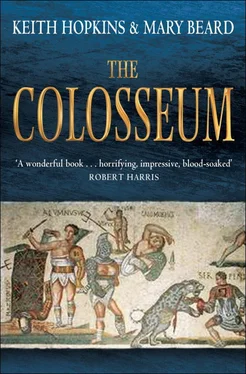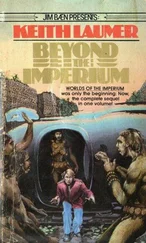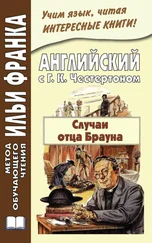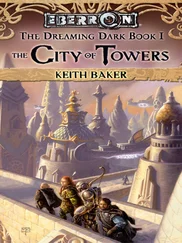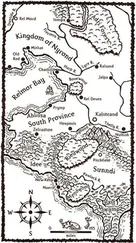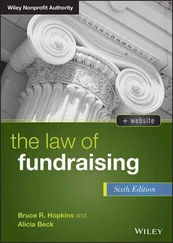Keith Hopkins - The Colosseum
Здесь есть возможность читать онлайн «Keith Hopkins - The Colosseum» весь текст электронной книги совершенно бесплатно (целиком полную версию без сокращений). В некоторых случаях можно слушать аудио, скачать через торрент в формате fb2 и присутствует краткое содержание. Город: London, Год выпуска: 2011, ISBN: 2011, Издательство: Profile Books, Жанр: История, на английском языке. Описание произведения, (предисловие) а так же отзывы посетителей доступны на портале библиотеки ЛибКат.
- Название:The Colosseum
- Автор:
- Издательство:Profile Books
- Жанр:
- Год:2011
- Город:London
- ISBN:9781846684708
- Рейтинг книги:3 / 5. Голосов: 1
-
Избранное:Добавить в избранное
- Отзывы:
-
Ваша оценка:
- 60
- 1
- 2
- 3
- 4
- 5
The Colosseum: краткое содержание, описание и аннотация
Предлагаем к чтению аннотацию, описание, краткое содержание или предисловие (зависит от того, что написал сам автор книги «The Colosseum»). Если вы не нашли необходимую информацию о книге — напишите в комментариях, мы постараемся отыскать её.
The Colosseum — читать онлайн бесплатно полную книгу (весь текст) целиком
Ниже представлен текст книги, разбитый по страницам. Система сохранения места последней прочитанной страницы, позволяет с удобством читать онлайн бесплатно книгу «The Colosseum», без необходимости каждый раз заново искать на чём Вы остановились. Поставьте закладку, и сможете в любой момент перейти на страницу, на которой закончили чтение.
Интервал:
Закладка:
Priscus and Verus , while with equal Might,
Prolong’d an obstinate and doubtful Fight,
The People, oft, their mission did desire;
But Caesar from the law would not retire,
Which did the Prize and Victory unite,
Yet gave them what Encouragement he might;
Largess of Meat and Money did bestow,
Which also ‘mong the People he did throw,
I’ the’end, howe’er, the Strife was equal found,
Both fought alike, and both alike gave ground:
So that the Palm was upon each conferr’d,
Their undecided Valour this deserv’d.
Under no Prince before we e’er did see
That two should fight, and both should Victors be.
Given our own image of these bloody combats, it is perhaps surprising that this courageous but apparently bloodless draw should be the only gladiatorial fight commemorated at the inaugural games in the Colosseum. Even more surprising is that – so far as we have been able to discover, at least – this poem is the only account of a specific gladiatorial bout to survive from the ancient world. We have plenty of boastful claims of gladiatorial numbers, a good deal of discussion about the appeal of the gladiators themselves and the valour, or the horror, of the fighting, not to mention tombstones recording their death in the arena, and countless images of these distinctively dressed combatants, decorating everything from cheap oil lamps to costly mosaic floors. Yet the only thing approaching a description of an actual contest between two individual gladiators is this tale of imperial generosity and the ancient equivalent of a goalless draw in AD 80.
ON WITH THE SHOW
Spectacular shows over many days, such as those that opened the Colosseum, were infrequent – though much trumpeted – events in the monument’s history. The enthusiasm of individual emperors for these spectacles varied considerably, as did their generosity. Some were notoriously stingy. Others gave special games to celebrate the anniversary of their succession, for their birthday or victory over foreign enemies, or even to commemorate the glories of a predecessor. In the first decade of the second century, for example, the emperor Trajan gave the biggest bloodbath ever recorded, presumably in the Colosseum, to celebrate his conquest of Dacia (modern Romania). Dio again has some facts and figures: the shows took place on 123 days; 11,000 animals were killed, 10,000 gladiators fought. This time we have more details not from poetry written to commemorate the occasion, but from a record included in a calendar of public events inscribed in stone, from Rome’s port of Ostia. This more or less matches Dio’s picture of the scale of the events, but also makes clear that the celebrations did not take place in one continuous ‘sitting’ of more than a hundred days of solid slaughter. Instead they were broken down into smaller units. First, in 107 and 108, there were preliminary games in blocks of twelve or thirteen days, with over 300 pairs of gladiators at each. Then came the main show, which according to the inscription was staged on 117 days between June 108 and November 109 and involved ‘4941 and a half pairs of gladiators’ (the ‘half pair’ being a good indication that gladiators who survived one bout might fight again later in the same show – otherwise whom did the stray ‘half’ fight?). Maybe Titus’ inaugural games were divided up in this way too. It would certainly have made the organisation of animals and human fighters easier, and no doubt also have ensured a keener crowd. The idea that the Romans happily devoted weeks and weeks on end to watching displays of unadulterated slaughter in the Colosseum is probably a modern fantasy. Titus and Trajan would have understood the value of breaking the monotony, and of rationing the violence.
The regular performances in the Colosseum were not these blockbuster shows sponsored by emperors. It had been a tradition going back decades before the building of the Colosseum that Roman aristocrats would present shows – involving gladiatorial combat or wild beast hunts and displays, or a combination of the two – as part of their bid for popularity with the Roman people. These were the occasions that took place in the Forum or in temporary amphitheatres. Whatever the dangers of mass gatherings of the electorate, in the toughly competitive politics of the city of Rome, particularly in the years just before the advent of monarchy under Augustus, a good performance no doubt enormously helped a man’s chances of winning prestige and public office. Shows hosted by aristocrats outside the imperial family certainly continued through the first century AD and presumably after 80 also took place in the Colosseum. We say ‘presumably’ because ancient writers were so fixated on the emperor’s shows that they give us precious few details of any others.
Many of these may have been by the emperor’s standards modest, even amateurish, occasions, with a restricted repertoire of both gladiators and beasts, a long way from the popular image of sadistic excess. In fact, legislation was enacted and re-enacted through the Roman empire to limit the number of gladiators an ‘ordinary’ aristocrat might present and to regulate the displays. It was, after all, in the emperor’s interest to prevent potential rivals currying popular favour with lavish spectacles. But some aristocrats did evade the restrictions (which may not have been consistently or efficiently enforced anyway) and poured money into shows to enhance their public image. Even when it was centuries since they had been obliged to seek the votes of the people, their reputations still depended on ostentatious success. And, instead of a dangerous rivalry, some emperors may have felt that it was a relatively harmless way for them to spend their money.
At the end of the fourth century, a man by the name of Symmachus (a well-known defender of traditional Roman religion against the growth of Christianity), more than once invested huge amounts of time and wealth in funding shows to mark the public advancement of his son. We read in his Letters of his attempts to acquire exotic beasts: antelopes, bears, leopards and lions. It was not always worth the trouble or the cash. The bear cubs that he procured, for example, turned out to be emaciated specimens, but at least not quite the disaster that the Saxon gladiators were: twenty-nine of these strangled each other on the evening before their scheduled performance. But disasters or not, it was all phenomenally expensive. One Roman historian, whose work now survives only in snippets quoted by later writers, reckoned that Symmachus spent 2000 pounds of gold (in standard ancient Roman currency 9 million sesterces) to celebrate his son’s tenure of the office of praetor. That is a sum large enough to feed nearly 20,000 peasant families for a year at minimum subsistence, or nine times the minimum fortune required to qualify for senatorial rank, the topmost elite of Roman society. Allow for some exaggeration and suppose only 20 per cent of it went on the show; it still gives an idea of the level of expenditure that might be involved.
In the end it is hard for us to know how to visualise the Colosseum in Roman times. One picture is very much that offered by epic movies: an auditorium packed with spectators, an arena covered with animals, beast hunters and gladiators, and dripping with blood. The other is a much more everyday, low-key image: an auditorium hardly bursting at the seams, with a rather tame troupe of B-team gladiators and some mangy animals that have seen better days. That is always the dilemma with imagining Rome. Do we embrace the larger-than-life vision that is projected by later writers and by many Roman writers themselves? Or do we cynically suspect that for most of the time, outside a few very special occasions, the reality was a lot less impressive, frankly rather tawdry? And how do we decide?
Читать дальшеИнтервал:
Закладка:
Похожие книги на «The Colosseum»
Представляем Вашему вниманию похожие книги на «The Colosseum» списком для выбора. Мы отобрали схожую по названию и смыслу литературу в надежде предоставить читателям больше вариантов отыскать новые, интересные, ещё непрочитанные произведения.
Обсуждение, отзывы о книге «The Colosseum» и просто собственные мнения читателей. Оставьте ваши комментарии, напишите, что Вы думаете о произведении, его смысле или главных героях. Укажите что конкретно понравилось, а что нет, и почему Вы так считаете.
